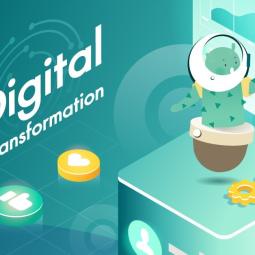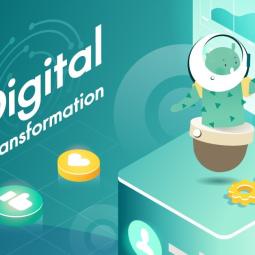IT management is a broad-ranging term, but when we use it on this site we’re referring to something quite specific. IT management covers digital technology initiatives at a strategic level. It helps you plan effectively, manage digital technology projects and budgets, and get staff and executive buy-in. It includes strategic-level topics such as:
- digital strategy
- governance
- change management
- digital culture
- stakeholder engagement strategy
- risk management
- digital technology budget costs
- business requirements.
The IT management domain includes the following main areas:
- IT planning and strategy – alignment of a digital strategy and planning with your business plan.
- IT budgeting – digital technology cost comparison with other organisations, priorities, budgeting and value for money.
- Staff engagement – ensuring staff are satisfied and engaged with the use of digital technologies in your organisation.
- Disaster management – critical infrastructure protection, data back-ups, disaster and continuity planning.
We've summarised our not-for-profit digital strategy and management capability levels and requirements in the table below, so you can understand what we recommend to progress through the levels.
Digital strategy and governance maturity
| Challenged | Basic | Intermediate | Advanced | |
|---|---|---|---|---|
|
IT planning & strategy |
No IT plan or roadmap exists |
A basic IT plan identifies key initiatives over the financial year. |
A documented digital plan exists covering 1-2 years, linked to the business strategy. An engaged management team prioritised this year’s digital improvement projects. Key managers take responsibility for driving value from improvement projects. Staff IT satisfaction is measured annually. |
A three-year strategic digital technology plan has been endorsed by the Board. The strategy is linked to the organisations business strategy and business benefits are clearly articulated for projects. The Digital Technology team are proactively consulted and involved early in the decision-making process about new programs, services & offices. |
|
IT budgeting |
No separate IT budget in place |
Budget includes key initiatives, IT operations and asset refresh. |
A comprehensive IT budget is in place that considers IT operations, subscriptions, devices, applications and digital projects. |
A comprehensive IT budget is in place that aligns with advancing the organisational strategy. |
|
Staff engagement |
Staff are responsible for their own training, but would rather spend time with clients, members & stakeholders. |
Most staff have the basic skills they need (where to save files, use of core systems, etc). Managers may be responsible for induction training. |
Reliable induction training and when significant things change ensure staff can work effectively. |
Staff are keen technology innovators and explore how to get the most from technology, enabling organisational efficiency and impact. |
|
Disaster management |
We’ll worry about it when a disaster happens. |
We have considered our disaster recovery requirements for core systems and have a sensible recovery plan, but it isn’t well documented. |
Basic disaster recovery & business continuity plans exist and have been tested in the last 12 months. |
A comprehensive disaster recovery plan document exists and is updated annually or after any significant change to the operations or assets of the organisation. |
Read next
What does 'digital transformation' mean for not-for-profits?





Status message
Thanks for rating this guide.